Welcome to Our New 2025 New Mexico Southwest Seed Partnership Growers!
by Maggie Knapp, November 2025
Good Dirt Farm
Good Dirt Farm is a small farm in the North Valley of Albuquerque, New Mexico that grows mostly perennial veggies, herbs, and flowers, and hosts a Community Supported Apothecary. This year they joined us as new partners with IAE, growing showy milkweed (Asclepias speciosa) and white prairie clover (Dalea candida). Both species will be used to produce seed for our River for Monarchs project. The farm currently hosts an impressive 130+ different species of plants!
When I visited the farm in mid-May, it was a riot of wildflowers, micro-habitats, and birdsong. Perennial flowers in every shade of every color made the farm feel vibrantly alive, and brought pollinators of many kinds to this tiny plot of land within a city. Olivia and Ellan, the farmers of Good Dirt Farm, walked me through the diverse rows of annuals and perennials. Cool, dappled shade fell on us from bosque cottonwoods, ubiquitous Siberian elms, and a few varieties of nitrogen-fixing mesquite trees, which grow here at the extent of their range in anticipation of climatic shifts. We picked up pods of different mesquite species from the duff (honey, screwbean, and bird of paradise) to sample them–honey was the tastiest. Olivia and Ellan taught me that you can lay prickly pear pads in a concentric circle underground when you plant a tree to act as sponges to help hold and distribute moisture to the tree with their absorbent, mucilaginous compounds. Plus, they contain a helpful rooting hormone, just like aloe vera.
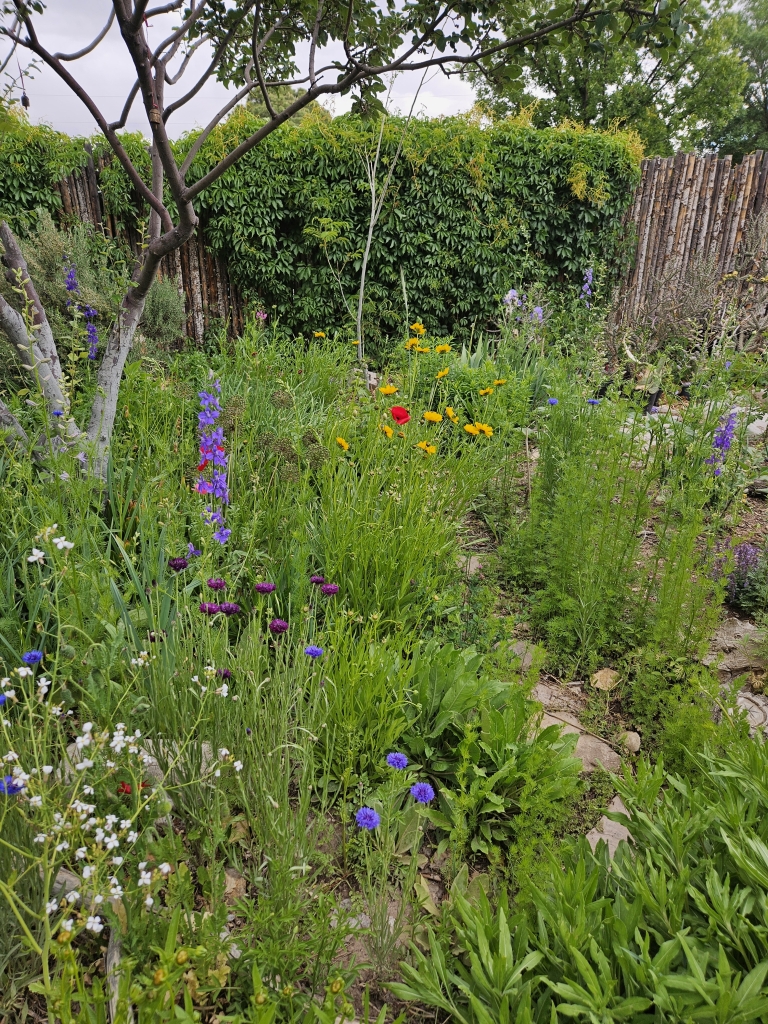
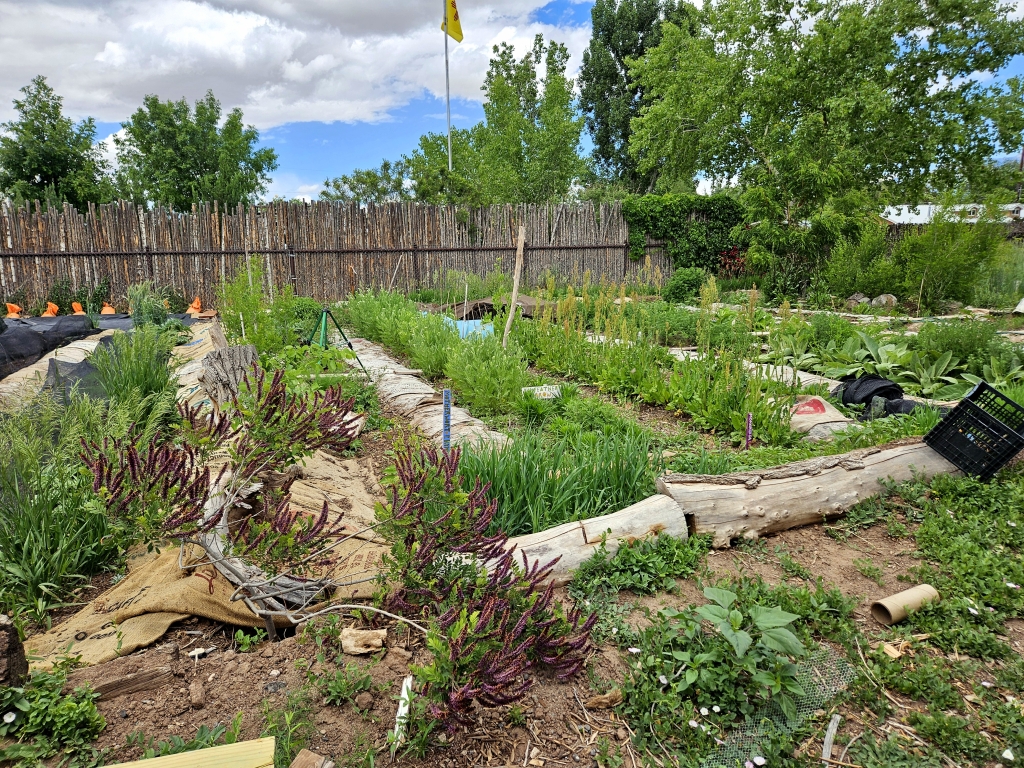
Rio Chama Seed, LLC
Rio Chama Seed, LLC is a 65-acre farm outside Abiquiu, New Mexico with 15 acres under cultivation in hay, and a few small plots that will be planted for ricegrass (Achnatherum hymenoides) and hoary tansyaster (Dieteria canescens). The ricegrass field will test different methods for growing ricegrass in a production setting – plug outplanting versus direct sowing. The tansyaster is bound for our River for Monarchs project.
Farmer Rick Roen got into the seed business in 1978, 47 years ago, and has been farming ever since. He has been rehabilitating his alfalfa fields with cover crops and orchard grass. He claims he never knew anything about grasses before, but now that he knows how hardy they are, he loves them! Despite receiving almost zero precipitation over the winter, Rick has noticed that the soil on the Rio Chama floodplain has still retained moisture underground about a foot down, all the way into June (this is due to what’s called “hyporheic exchange”). Rick is continually learning and experimenting every year, and this year he’s learned that he can still grow veggies in the winter outdoors under frost cover, even if it gets down to 10°F, so long as they are protected from frost by frost cloth.
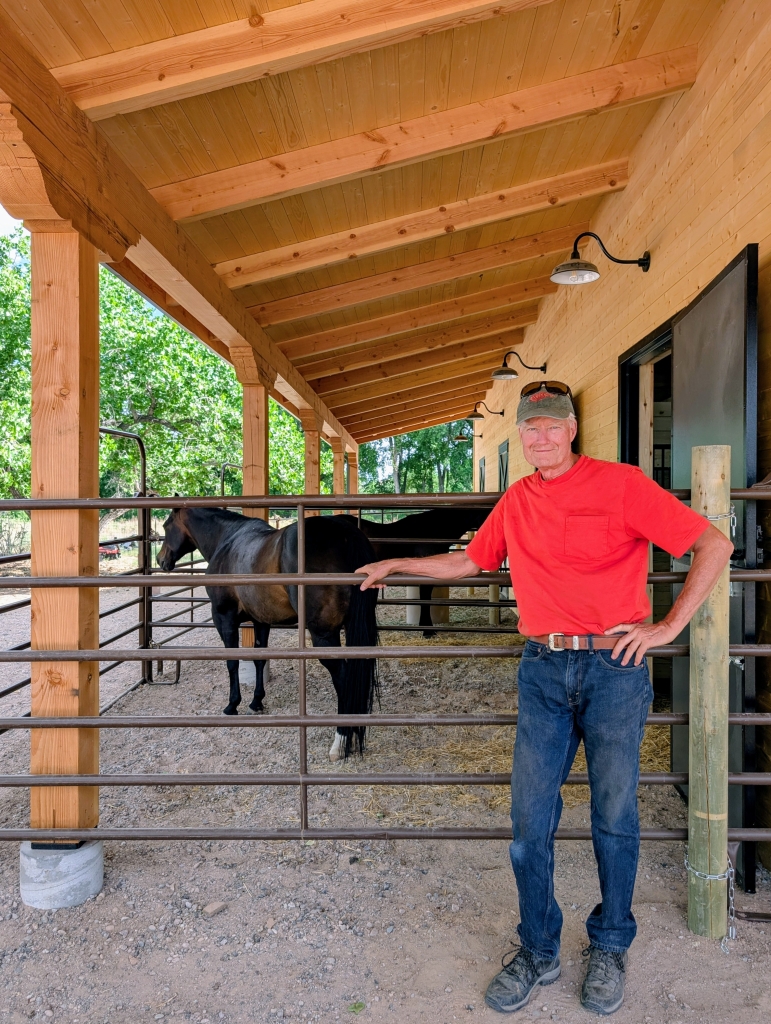
Ledoux Grange
Ledoux Grange is a certified organic 35-acre farm and ranch in Mora County, New Mexico, established by Kristin Swoszowski-Tran, a farmer originally from Vermont. She tends to veggies, grains, cover crops, yaks, fruit trees, and now native wildflowers in partnership with IAE. Ledoux Grange is growing 0.25 acres of MacDougal verbena (Verbena macdougalii) and 0.25 acres of showy goldeneye (Heliomeris multiflora) to support pollinators across the Southwest as a part of our partnership with the U.S. Forest Service.
Ledoux also has 30 acres of pasture in hay, 2 acres for food production and cover crop, and an ancient little orchard that Kristin is restoring and grafting. Her favorite of the fruits are the Mora plums, and she’s trying out espaliering (pronounced “es-paul-yay-ing”) apricots in the high tunnel. The Mora region lost many special varietals of abandoned fruit trees in the Hermit’s Peak/Calf Canyon wildfire in 2022, but fortunately Kristin had collected their seeds, and is growing them out again as saplings.
Before she became a farmer, Kristin received a PhD in psychology, so she thinks a lot about behavior, patterns, and problem solving. As a farmer and researcher with the Southwest Grain Collaborative, she grows regionally-adapted dryland landraces of grains and pulses from around the world. Kristin also sells to the New Mexico Grown program, which aggregates produce from small farmers around the state to sell to food banks, schools, and senior centers. She tells us that New Mexico is actually a leader nationally in this kind of work—food safety, food distribution, and partnerships for regional food security.
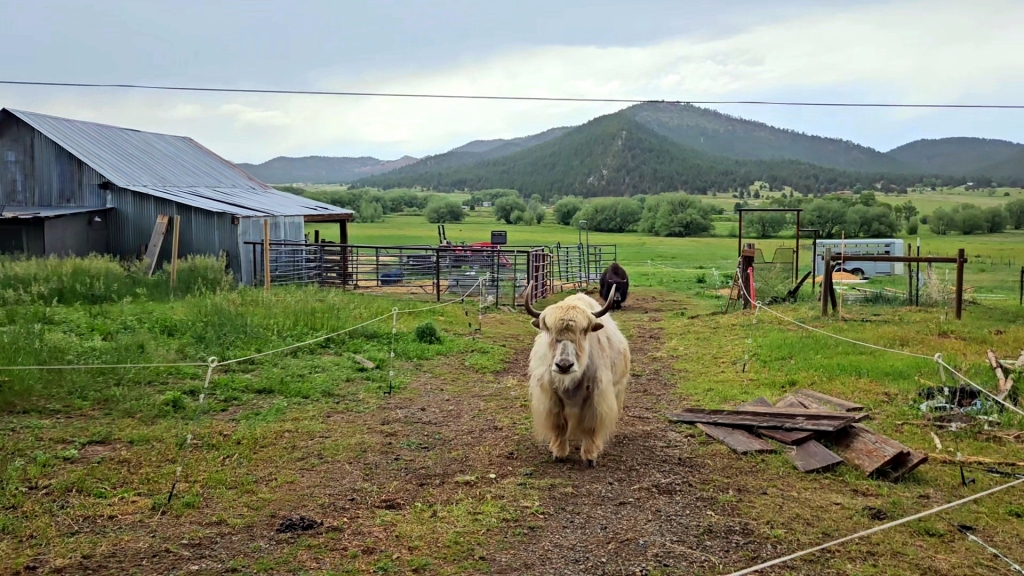

Charybda Nursery
Charybda Nursery is a beautiful little farm and nursery set atop the ridge above Arroyo Hondo, Taos, New Mexico. The farm has been owned and managed by Paul Cross since the 1990s. Paul is growing plugs of a number of species for grasses and wildflowers for the Southwest Seed Partnership to benefit pollinators and the federally listed lesser prairie-chicken in the high plains of eastern New Mexico. Paul specializes in native plants, and grows starts for the sale events of the New Mexico Native Plant Society’s Taos Chapter. His greenhouse roof catches about 45,000 gallons of water a year, which is used to water all the greenhouse plants, year-round. Paul is full of native plant knowledge from his many years of experience and his passion for botany, and says that every time he goes hiking he comes home with pockets full of seeds that he then has to grow out to identify.
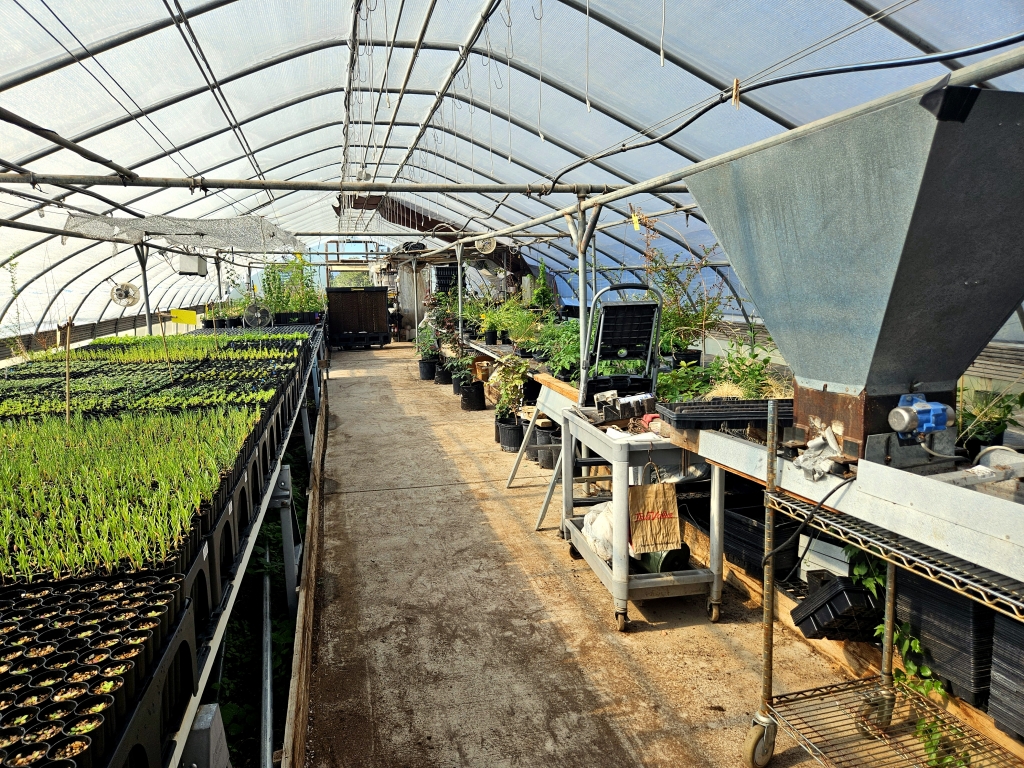
Pocket Farm
Pocket Farm is a 4-acre farm nestled into the bosque of Los Lunas, New Mexico, run by Barbara Bell and Sheri Crider. They also run the Sanitary Tortilla Factory artist studios and the Mobile Abolition Library in Albuquerque. Sheri and Barbara bought their farm three years ago and promptly began broadcasting native grasses over their patches of bare ground, which brought an explosion of birds and other wildlife to their yard. Last year Sheri and Barbara bought the two acres next door, and are now growing 0.25 acres of sand dropseed (Sporobolus cryptandrus) for IAE’s Southwest Seed Partnership. These plugs were grown out at the Central New Mexico Correctional Facility (CNMCF) as part of our Conservation in Prisons Program.
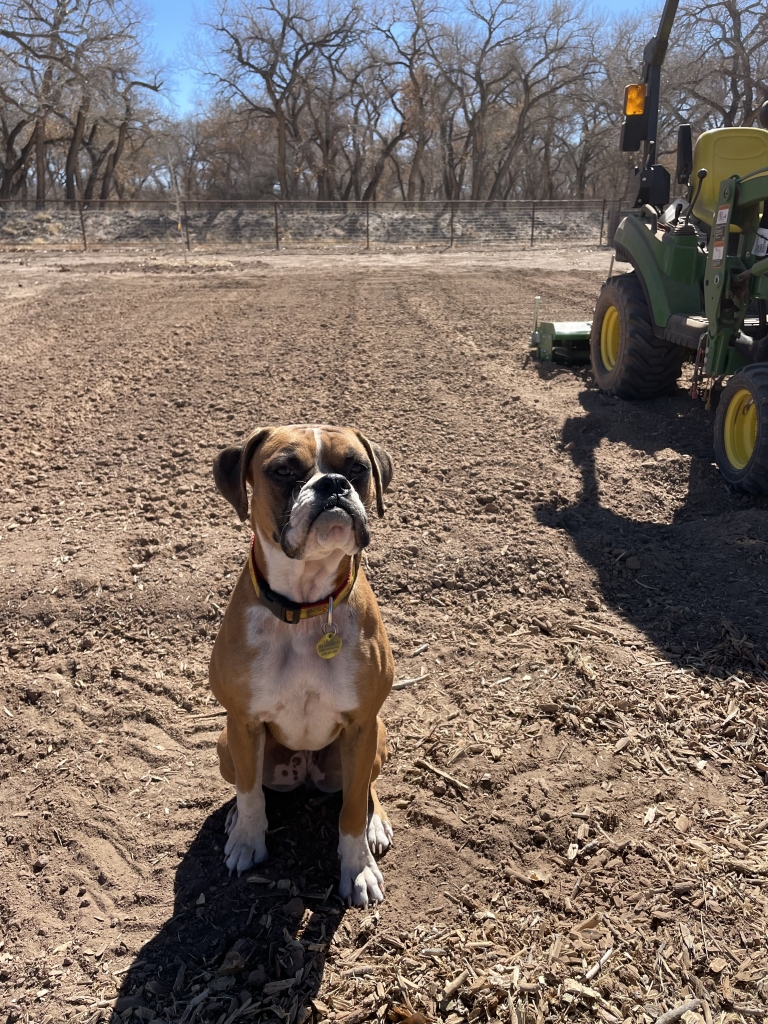
We are grateful for the new partnerships we’ve built over the past year and are looking forward to continuing to strengthen relationships with local growers. We thank the Thornburg Foundation and Carroll Petrie Foundation for their vital funding support.
